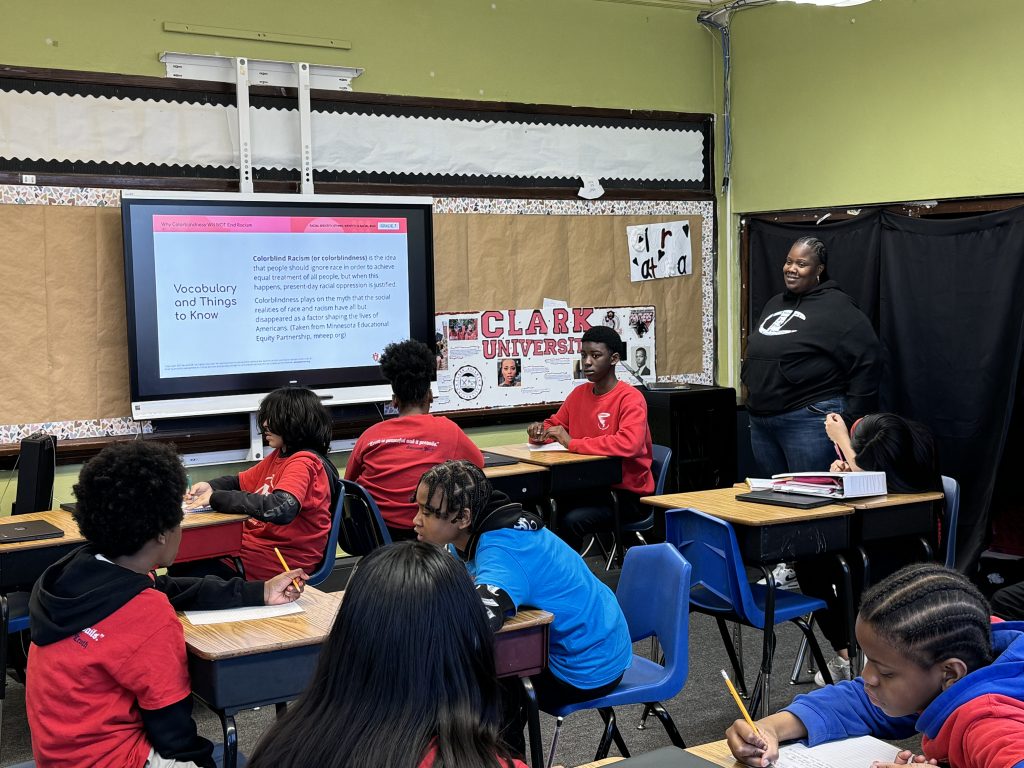
Have you ever wondered what an AmazeWorks middle school lesson looks like in action? We took a peek inside Evelyn Stevenson’s 6th grade classrooms to find out.
Evelyn Stevenson teaches at Sojourner Truth Academy in north Minneapolis and shares her classroom with a teaching assistant, Mr. R. We observed two lessons from the Ability & Neurodiversity module of our Middle School curriculum: “Five Questions about Autism” and “Explaining ADHD.”

Here’s what we discovered:
Evelyn began by asking her students about their understanding of the topics. Questions like, “What do you think ADHD is?” and “What questions would you ask someone with autism?” sparked engaging discussions and helped her gauge the class’s baseline knowledge.
Next, the class reviewed important vocabulary terms provided by AmazeWorks. Evelyn expanded on specific definitions to deepen students’ understanding and address any questions or observations they had.

The AmazeWorks Middle School Curriculum differs from our other programs because it uses videos to engage students in the lesson topics. The class watched the videos together, listening to people’s insights and experiences living with the neurological autism and ADHD. Evelyn played the videos with Spanish subtitles to support her English language learners.
Students were given time to reflect on the video in their journals. Evelyn collects the journals weekly, checking for completion rather than evaluating the content. Students can indicate if they would prefer her not to read specific entries, allowing for the privacy to express their thoughts.
AmazeWorks provided discussion questions for the lessons, and Evelyn also asked her own, inspired by the students’ reflections. The classroom was fully engaged, leading to meaningful and brave conversations.
Evelyn wrapped up the class by discussing how everyone has biases, but these shouldn’t influence how we treat others.
AmazeWorks lessons foster regular, intentional conversations about identity, difference, and bias—essential for closing the opportunity gap and creating cultures of belonging. Our Middle School Curriculum equips students with tools to navigate complex social issues and build skills to support academic growth and preparation for high school and beyond. We know the importance of positive representations for all identities, including ability and neurodiversity. When students are fully seen, heard, and valued, they are better able to learn and thrive.
We’d like to extend our heartfelt thanks to Evelyn Stevenson, Mo Kroening, and everyone at Sojourner Truth Academy for welcoming us into your school and showcasing how you bring belonging to life. Stay tuned for more insights into anti-bias education from AmazeWorks! ⭐